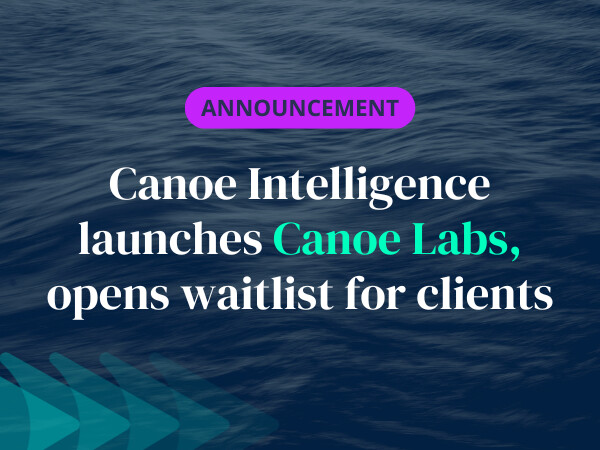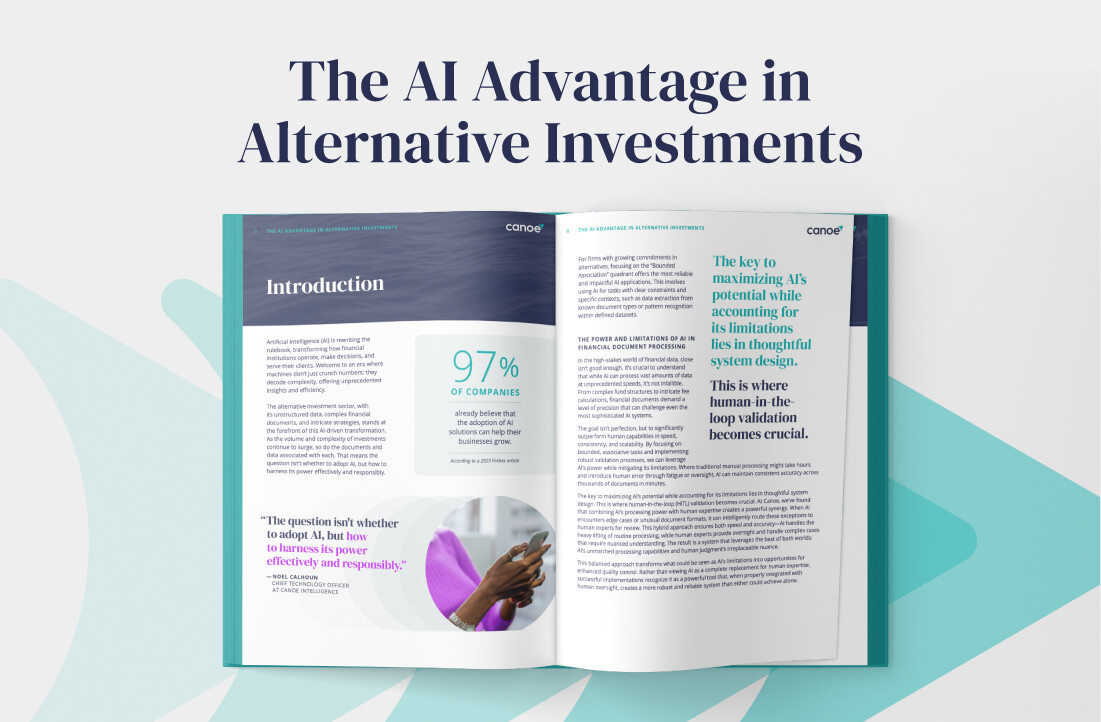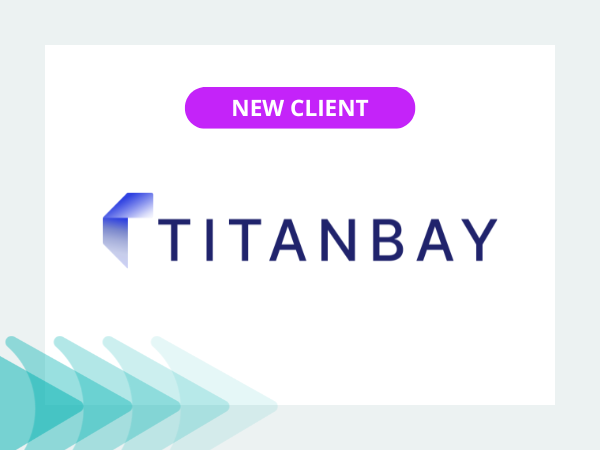What are APIs, and Why Should Alternative Investors Use Them?
Alternatives Tech: Examples in Action
In an effort to demystify the ways modern fintech drives operational efficiency for end-users, Canoe is conducting a series of blogs diving deep into different technical topics. These explorations aim to illustrate the real-world impact of these technical concepts by showing how they are applied in practice. In this example, we demonstrate how alternative investors can leverage Application Programming Interfaces (APIs) to drive increased operational efficiency.
Defining APIs and Their Use Cases
In simple terms, an API is how two different pieces of software “talk” to each other. APIs are intermediary software interfaces that allow one application to communicate or provide a service to another.
Many software vendors advertise their API integrations as a way of communicating the extensibility of their core solutions. An API integration indicates that two software components automatically communicate back and forth. Common uses for this type of integration include enabling automatic data syncs and executing automated system workflows.
Bidirectional, or “two-way,” API integrations can be especially useful as the information is shared between both pieces of software versus one party serving as a sender and the other as a recipient. This eliminates the need for manual effort on either side of the integration.
APIs in Practice
There are a number of ways APIs may be used to enable end-users depending on the team’s needs and preferences.
For clients and partners looking to develop their own custom integrations with a vendor, open APIs are a great option. An open API is publicly available so that developers can programmatically access an application or web service. These APIs are typically made available to your development team so that they can build an integration and obtain the data necessary for your business. The API includes governance requirements for how the application can be used to communicate with another application, and the API’s publisher can dictate permitted use cases for the open data.
For example, in the alternative investment space, Canoe offers an open API for clients and partners to build custom integrations that enable more efficient workflows on their end. Canoe’s clients leverage the open API to automate a number of manual processes, including ingesting documents, mapping to their research management system (RMS), and delivering data to their accounting, analytics, and reporting systems.
Many of Canoe’s partners, including Exchangelodge and Bipsync, have built integrations using our open API. Through a fully automated API integration, Exchangelodge consumes extracted data and documents from Canoe to fill in any data gaps and intelligently identify, cleanse, review and approve any data discrepancies, resulting in enriched and validated data delivered to other internal systems for reporting and analysis. Via the Bipsync integration, documents are systematically transferred from Canoe to Bipsync and then stored in Bipsync RMS, an integrated research environment with enterprise security and compliance. Security is key here – only applications that you authorize can access your Canoe data or documents, and those applications can only access the items that you’ve permitted under your user credentials. Access can be revoked at any time by disabling the application’s user credentials.
Vendors may also offer specific API integrations, such as the Canoe x Addepar integration. Pre-configured, or out-of-the-box, API integrations may be developed to standardize common workflows between complementary systems. These integrations can benefit your team by expediting both the implementation process and ongoing work. In building this integration, Canoe leveraged Addepar’s open API and collaborated regularly to review integration requirements, map data models, and align other system elements to ensure a seamless user experience. Additionally, our mutual clients shared feedback on the proposed integration to ensure the final integration would meet their needs.
An Example in Action: Canoe x Addepar
To illustrate the purpose of an API in action, we will use a recent example built at Canoe to improve our clients’ operational efficiency. Canoe, an advanced document collection and AI-based data extraction technology platform, was founded to automate the access to and delivery of alternative investment data. Addepar, a global technology and data platform, was founded to solve for the aggregation of highly sophisticated portfolios, which tend to be heavily invested in alternative investments. Over time, the highly complementary nature of the two platforms and shared client profiles led to the development of a bidirectional API.
Through our years-long partnership, Canoe and Addepar have continually worked to evolve the connectivity between our systems and identify improvements to the efficiency of our mutual client experience. For years, Canoe users exported standardized alternative investment data extracts and imported those extracts directly into Addepar. Their portfolio details could similarly be exported from Addepar for import into Canoe. Together, in October 2022, we launched a bidirectional API integration, delivering additional operational scale and efficiency to our mutual end users. The new integration further streamlines these processes by eliminating the manual export/import steps on both sides.
With the introduction of this new API integration, we eliminated the manual upload so that data would flow automatically between the two platforms. Since the sync is bidirectional, Canoe and Addepar are now both senders and recipients. Thus, the API also does away with the duplicate data entry in the prior workflow as the entities and ownership between Canoe and Addepar are automatically synced. You can define the upload schedule and continue to use the filters and tags you have used in the past, but these workflows no longer need to be performed by a person.
Next Steps
Now that you have background on what APIs are and how a bidirectional sync can provide additional operational leverage, we invite you to explore how the integration between Canoe and Addepar can benefit your firm.
Our partnership with Addepar is just one example of our extensive API library. Earlier this year, Canoe launched a Partner Program to formalize and enhance the relationships we have fostered with industry-leading platforms, opening up additional opportunities for expansion.




